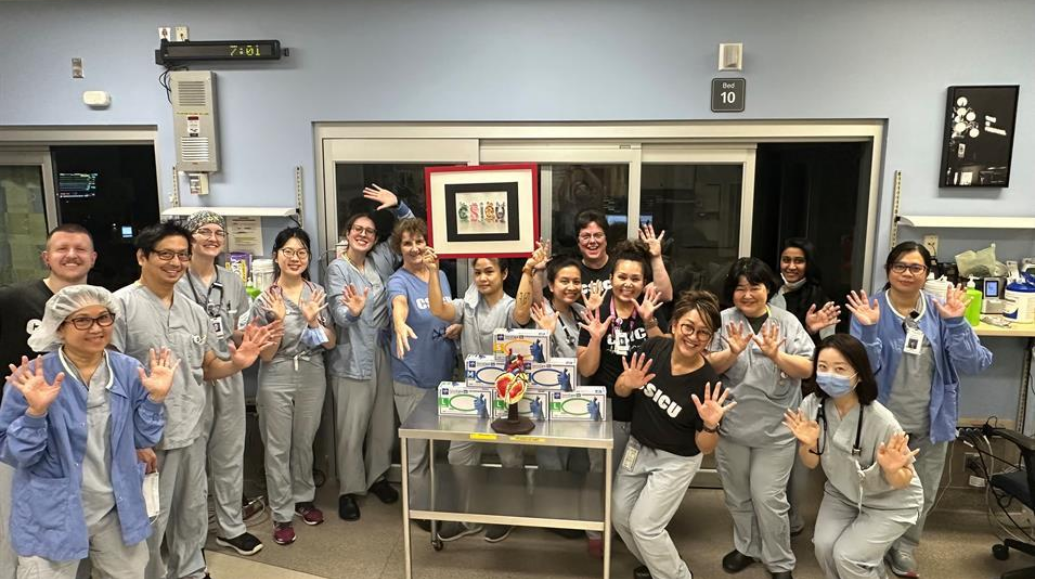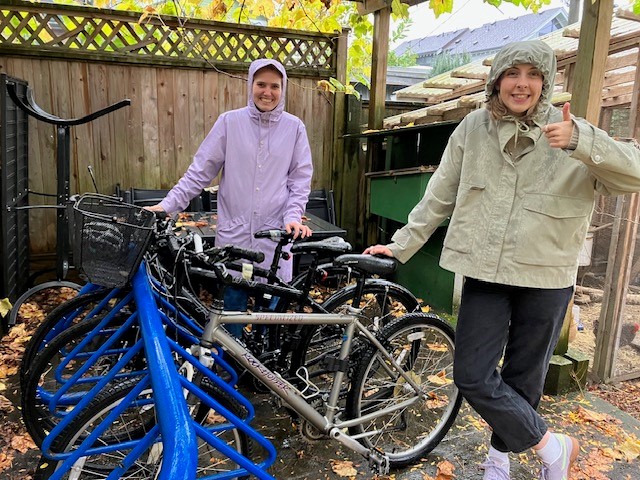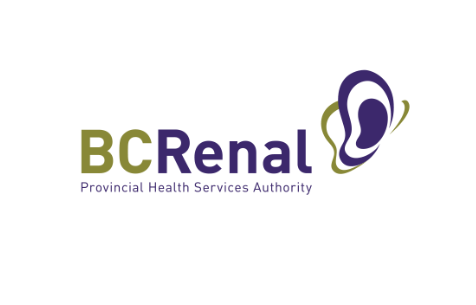Original story submitted to PHC Connect (internal newsletter) by Ramses Prado, Quality Improvement Consultant at Providence Health Care.

While working as a Registered Nurse at the Cardiac Surgery Intensive Unit (CSICU) in St. Paul’s Hospital, Chandell Kelly, a member of the Waste Working Group (part of the Environmental Stewardship Team – ESTeam), observed that staff often wear non-surgical gloves when the task they would perform did not necessarily require it. This was an unintended consequence of the COVID-19 pandemic, during which there was a forced increase in the use of Personal Protective Equipment (PPE) among clinical staff across the health care system (Yang et al., 2022). Besides the financial cost, excessive and unnecessary use of PPE has an environmental impact.
With this in mind, the Waste Working Group performed a quantitative analysis on the use of non-surgical gloves in the CSICU. The analysis showed that in the years before the pandemic (2017-2019), the unit would use, on average, 32,003 non-surgical gloves per month. From January to October 2022, however, the use of non-surgical gloves was 33,596, a 5% increase since the COVID-19 pandemic.
Based on these numbers, CSICU at SPH committed to a Quality Improvement pilot project to reduce the inappropriate use of non-surgical gloves by 10% by December 31, 2023. To achieve this target, the Waste Working Group and CSICU worked collaboratively by:
- Performing literature reviews and obtaining expert advice from international colleagues who have run similar projects with successful results
- Developing educational material to increase awareness of the appropriate use of non-surgical gloves based on the standards and best practices in current policies at PHC
- Creating an audit tool, with the guidance of our own IPAC representative, Sherly Boddu, to measure the effectiveness of the staff education campaign and compliance with the PHC standards of appropriate use of non-surgical gloves
- Ongoing peer-education
- Monitoring the monthly usage of non-surgical gloves in the unit
The results of the pilot project in CSICU could not be any better; comparing the numbers from the pilot (July-Dec) with the same timeframe from last year (2022), we can see that there was a reduction of 53% in the use of gloves. That is 43% over the original aim!

In plain numbers, this pilot project saved 90,100 non-surgical gloves, which represent 2,342.6 Kg of CO2e, equivalent to 998 litres of gas consumed. Basically, the gas needed to drive from Vancouver, BC to Tampa, FL and back!

During these six months, the staff compliance with the PHC standards of appropriate use of gloves, measured by the audit, also increased from 39% median baseline to 75%!

One of the most valuable lessons learned during the development of this project was the importance of staff champions who were willing to take the lead on changing the status quo and work collaboratively to accomplish their goal. Huge acknowledgment of the tireless work that Chandell Kelly, Marianne Lesage, Hecel Peakman, Ann Gibb and Caitlin Brown from the CSICU team as well as the collaboration of Leyla Khosrovpour, Karmen Wong, Theresa McElroy, Julie Werry, Andrew Mendes, Sherly Boddu, Ramses Prado and, our patient partners, Kyle Warkentin and Irene Toy to make this happen.
References:
- Yang, S., Cheng, Y., Liu, T. et al. Impact of waste of COVID-19 protective equipment on the environment, animals and human health: a review. Environ Chem Lett 20, 2951–2970 (2022). https://doi.org/10.1007/s10311-022-01462-5
- Rizan C, Reed M, Bhutta MF. Environmental impact of personal protective equipment distributed for use by health and social care services in England in the first six months of the COVID-19 pandemic. Journal of the Royal Society of Medicine. 2021;114(5):250-263. doi:10.1177/01410768211001583
- https://oee.nrcan.gc.ca/corporate/statistics/neud/dpa/calculator/ghg-calculator.cfm?_gl=1*i0u7gc*_ga*MTQwNjI1NjczMS4xNjc1ODAwMDgy*_ga_C2N57Y7DX5*MTY3NTgwMDA4Mi4xLjEuMTY3NTgwMDEwNy4wLjAuMA..#results
- Google Maps. (n.d.). [Directions for driving from Vancouver, Canada, to Tampa, US]. Retrieved Jan 22, 2024, from https://maps.app.goo.gl/gbLt6pKZrYeokDYy9








